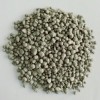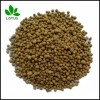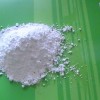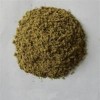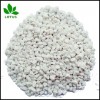1. FEATURES
SSP is one of forms of phosphate
SSP supplies sulphate, one of the other important nutrients in all soils
SSP supplies calcium
The ratio of P and S suits many crop and pasture needs
Both the P and S are in readily available forms
SSP can be blended with other products to make a range of products
SSP can be stored easily for long periods, without taking up moisture
SSP contains calcium and sulphur (mostly as gypsum) and helps keep soil in good shape by maintaining soil structure
2. MANUFACTURE
Single Super Phosphate is produced by reacting naturally occurring Rock Phosphate with Sulphuric Acid. This process converts insoluble phosphates into forms more readily available to plants.
Phosphate Rock + Sulphuric Acid = Single Super Phosphate
Impact Fertilisers’ SSP manufacturing process uses blends of various Phosphate Rock sources.
Critical steps in the process include:
Grinding the Phosphate Rock (PR) to the correct size
Accurately metering the PR, Sulphuric Acid, and water
Mixing together thoroughly
Time for the reactions to occur
The reacted material is fed into a granulation drum and across a screening process to produce granulated Single Super Phosphate.
The Single Super Phosphate is then stored for a period of weeks to allow further reactions to occur within the product to maximise the proportion of available Phosphate in the commercial product.
The cured Single Super Phosphate is dried and screened prior to dispatch.
3. USES
Low cost source of P and S in a wide range of pasture and cropping situations. SSP is a traditional product for supplying P and S to pastures, the main two nutrients required for pasture production. Source of P in mixes with N and K for a range of crop and pasture needs. Generally mixed with Sulphate of Ammonia and Muriate of Potash, but can be blended with other fertilisers.
4. STORAGE AND HANDLING
SSP can be stored for relatively long periods (0 - 6 months).
SSP does not take up moisture from the air.
SSP can be used in a wide range of spreading and sowing equipment.
5. RESTRICTIONS
Particles may deteriorate in time so long-term storage (> 6 months) is not recommended.
Do not mix with Urea, DAP or products with a low critical humidity as products will react and become gluggy.
The portion of finer particles may cause problems such as blockages and uneven flow in some airseeders designed for high analysis products.
Do not store in silos.
6.Specification
Available P2O5:12%-18%
Moisture:10%max(powder) 3%max (granule)
Free Acid:5%max
Granule Size:2-4mm



